-
 Bitcoin
Bitcoin $82,315.2997
0.26% -
 Ethereum
Ethereum $1,823.2360
1.36% -
 Tether USDt
Tether USDt $0.9998
-0.02% -
 XRP
XRP $2.0874
-1.98% -
 BNB
BNB $604.9336
0.82% -
 Solana
Solana $125.1265
0.41% -
 USDC
USDC $1.0001
0.00% -
 Dogecoin
Dogecoin $0.1658
-0.16% -
 Cardano
Cardano $0.6607
0.31% -
 TRON
TRON $0.2390
3.42% -
 Toncoin
Toncoin $4.0964
5.15% -
 Chainlink
Chainlink $13.5180
1.22% -
 UNUS SED LEO
UNUS SED LEO $9.1429
0.28% -
 Stellar
Stellar $0.2635
-0.99% -
 Avalanche
Avalanche $18.7513
-0.54% -
 Shiba Inu
Shiba Inu $0.0...01235
-0.43% -
 Sui
Sui $2.2705
-2.49% -
 Hedera
Hedera $0.1633
-2.48% -
 Polkadot
Polkadot $4.0235
0.12% -
 Litecoin
Litecoin $83.2209
-2.86% -
 MANTRA
MANTRA $6.2207
-0.05% -
 Bitcoin Cash
Bitcoin Cash $302.7871
1.51% -
 Bitget Token
Bitget Token $4.4968
-1.84% -
 Dai
Dai $0.9998
-0.02% -
 Ethena USDe
Ethena USDe $0.9998
-0.03% -
 Pi
Pi $0.7186
-6.72% -
 Hyperliquid
Hyperliquid $12.9760
4.32% -
 Monero
Monero $215.0706
-1.27% -
 Uniswap
Uniswap $5.9711
1.92% -
 Aptos
Aptos $5.2652
-0.07%
how to mine tron
To mine Tron, you'll need a TRX wallet, TRX tokens, and to join a staking pool where you delegate your tokens to participate in block validation and earn proportionate rewards.
Nov 07, 2024 at 09:40 am
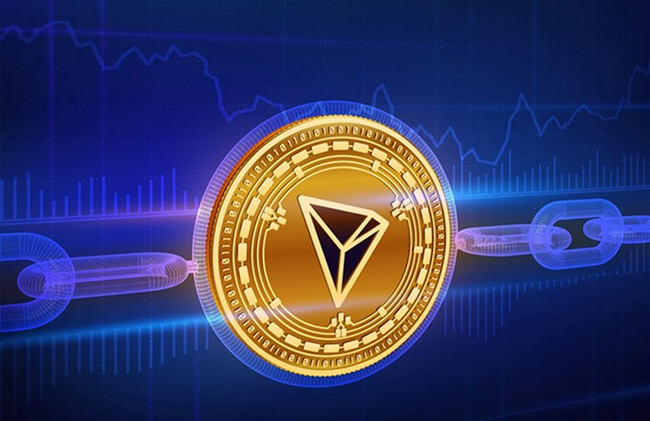
How to Mine Tron: A Comprehensive Guide
Introduction:
Tron is a decentralized blockchain network that allows for the development and deployment of decentralized applications (dApps). As with other cryptocurrencies, TRON utilizes a Proof-of-Stake (PoS) consensus mechanism, which eliminates the need for specialized mining hardware. Instead, users participate in block validation by staking their TRON (TRX) tokens. This article provides a step-by-step guide to mining Tron and explores the various methods and requirements.
Steps to Mine Tron:
1. Acquire a Tron Wallet:
The first step to mining Tron is to obtain a Tron wallet to store your TRX tokens and interact with the Tron network. Several popular Tron wallets are available, including:
- TronLink: A browser extension wallet with integrated staking features.
- Ledger Nano X: A hardware wallet that provides secure offline storage for TRX.
- Atomic Wallet: A desktop and mobile wallet that supports multiple cryptocurrencies, including TRX.
2. Purchase TRX Tokens:
You will need TRX tokens to stake and validate blocks on the Tron network. These tokens can be purchased through cryptocurrency exchanges such as Binance, Coinbase, or Kraken.
3. Join a Staking Pool:
To maximize your mining rewards, it is recommended to join a staking pool. Staking pools combine the resources of multiple validators to increase their chances of block validation. Some popular Tron staking pools include:
- TronPool: A large and reputable staking pool with low fees.
- Binance Pool: A staking pool operated by the Binance cryptocurrency exchange.
- Huobi Pool: A staking pool offered by the Huobi cryptocurrency exchange.
4. Delegate Your TRX Tokens:
Once you have joined a staking pool, you need to delegate your TRX tokens to the pool's validator. This process involves transferring your TRX to the pool's address and specifying the amount you wish to delegate.
5. Maintain a Stable Connection:
To participate in staking, you must maintain a stable internet connection and keep your wallet online. If your connection is interrupted, you may miss out on staking rewards.
6. Collect Tron Rewards:
When a block is validated using your staked TRX, you will receive a portion of the block reward proportionately to your stake. Rewards are distributed automatically to your Tron wallet.
Conclusion:
Mining Tron is an accessible and potentially rewarding way to participate in the Tron network and earn rewards. By following the steps outlined in this guide, you can set up your mining operation and start earning TRON. Remember to research and understand the risks associated with staking and choose a reputable staking pool to maximize your rewards.
Disclaimer:info@kdj.com
The information provided is not trading advice. kdj.com does not assume any responsibility for any investments made based on the information provided in this article. Cryptocurrencies are highly volatile and it is highly recommended that you invest with caution after thorough research!
If you believe that the content used on this website infringes your copyright, please contact us immediately (info@kdj.com) and we will delete it promptly.
- What is a stablecoin?
- 2025-04-01 06:45:12
- Vitalik Buterin Outlines a Comprehensive Security and Efficiency Enhancement Proposal for Ethereum L2s
- 2025-04-01 06:45:12
- The “Free Palestine” Liberation Coin: A Unique Blend of Artistry, Empathy, Activism, and Investment.
- 2025-04-01 06:40:11
- Qubetics (TICS) Presale Is Live, Aiming to Disrupt Web3 Development with QubeCode IDE
- 2025-04-01 06:40:11
- Web3 Technology Summit 2025
- 2025-04-01 06:35:12
- Donald Trump Jr. and Eric Trump Launch Cryptocurrency Mining Company "American Bitcoin"
- 2025-04-01 06:35:12
Related knowledge
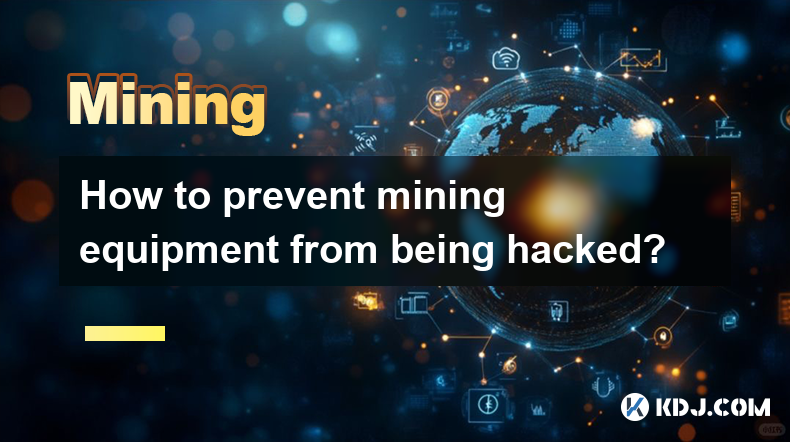
How to prevent mining equipment from being hacked?
Apr 01,2025 at 06:22am
Understanding the ThreatsCryptocurrency mining, while potentially lucrative, exposes your equipment to various cyber threats. These threats range from simple malware infections that steal your mining profits to sophisticated attacks that hijack your entire operation. Understanding these threats is the first step in effective protection. This includes r...
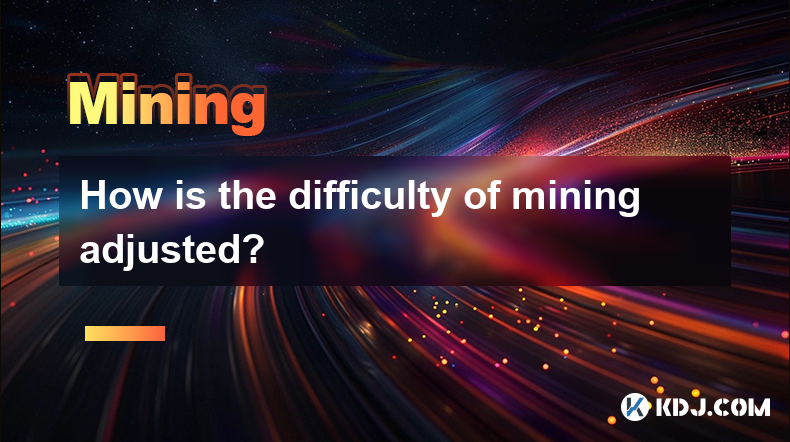
How is the difficulty of mining adjusted?
Apr 01,2025 at 07:14am
Understanding Bitcoin's Difficulty Adjustment MechanismBitcoin's mining difficulty is a crucial element ensuring the network's stability and security. It dynamically adjusts to maintain a consistent block generation time, approximately every 10 minutes. This adjustment prevents miners with overwhelming computing power from monopolizing block creation a...
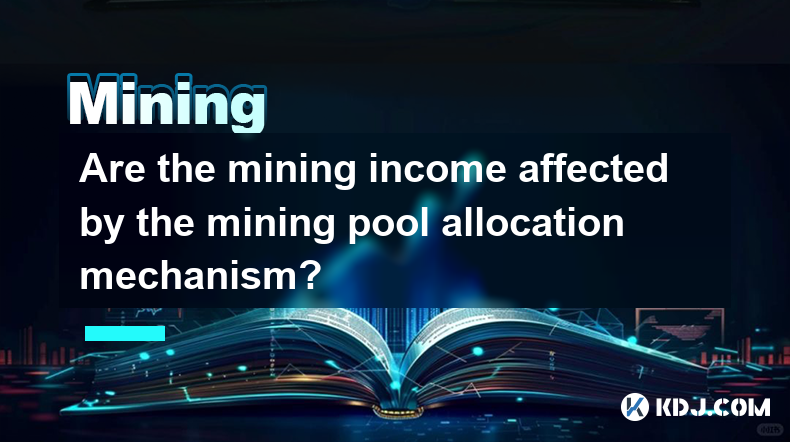
Are the mining income affected by the mining pool allocation mechanism?
Mar 31,2025 at 05:49pm
Understanding Mining Pool Allocation MechanismsMining pools aggregate the hashing power of many miners to increase the chances of successfully mining a block. The reward for successfully mining a block is then distributed among the pool's participants based on their contribution – usually measured in shares submitted. The allocation mechanism determine...
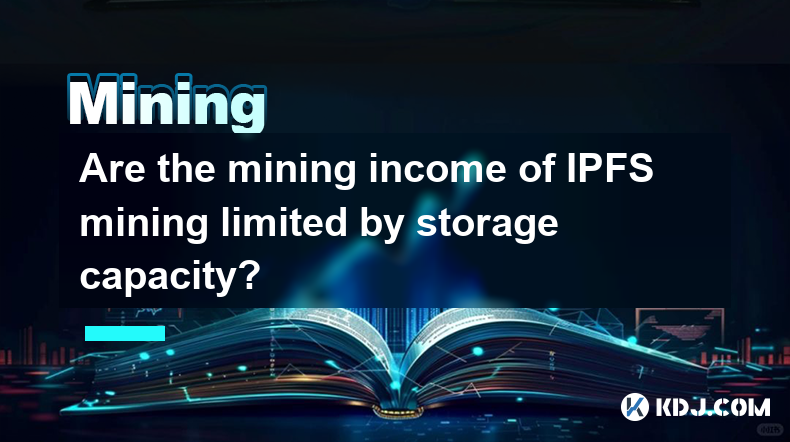
Are the mining income of IPFS mining limited by storage capacity?
Apr 01,2025 at 12:00am
Understanding IPFS Mining and its Revenue ModelIPFS (InterPlanetary File System) mining, unlike Bitcoin mining which relies on computational power, focuses on providing storage and bandwidth to the network. Miners earn rewards by making their storage available and contributing to the overall health and efficiency of the decentralized network. The amoun...
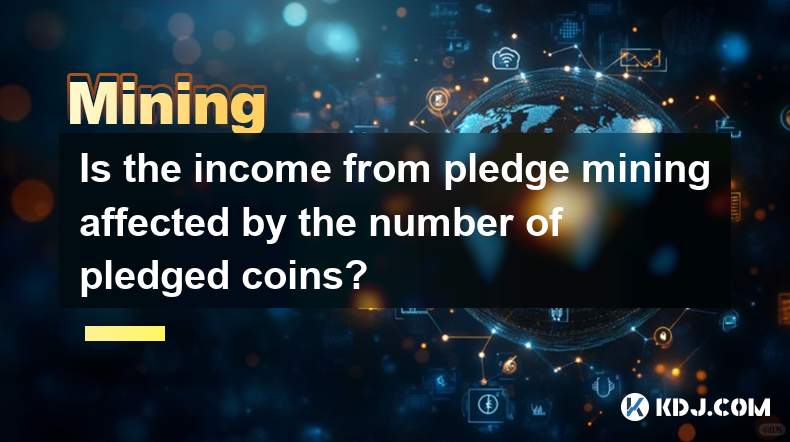
Is the income from pledge mining affected by the number of pledged coins?
Apr 01,2025 at 03:29am
The Relationship Between Pledged Coins and Mining RewardsThe simple answer is: yes, the income from pledge mining is generally affected by the number of pledged coins. However, the relationship isn't always linear and depends heavily on the specific mechanism employed by the cryptocurrency project. Let's explore the nuances. Many pledge mining systems ...

What is the difference between mining machine mining that can earn 2,000 yuan a day and ASIC mining?
Mar 31,2025 at 08:56pm
Understanding High-Earning Mining Machines and ASICsThe claim of a mining machine earning 2,000 yuan (approximately $280 USD) daily is a bold one, requiring careful examination. This level of profitability is highly dependent on several factors, and isn't necessarily indicative of a specific type of mining machine. It's crucial to understand that profi...

How to prevent mining equipment from being hacked?
Apr 01,2025 at 06:22am
Understanding the ThreatsCryptocurrency mining, while potentially lucrative, exposes your equipment to various cyber threats. These threats range from simple malware infections that steal your mining profits to sophisticated attacks that hijack your entire operation. Understanding these threats is the first step in effective protection. This includes r...

How is the difficulty of mining adjusted?
Apr 01,2025 at 07:14am
Understanding Bitcoin's Difficulty Adjustment MechanismBitcoin's mining difficulty is a crucial element ensuring the network's stability and security. It dynamically adjusts to maintain a consistent block generation time, approximately every 10 minutes. This adjustment prevents miners with overwhelming computing power from monopolizing block creation a...

Are the mining income affected by the mining pool allocation mechanism?
Mar 31,2025 at 05:49pm
Understanding Mining Pool Allocation MechanismsMining pools aggregate the hashing power of many miners to increase the chances of successfully mining a block. The reward for successfully mining a block is then distributed among the pool's participants based on their contribution – usually measured in shares submitted. The allocation mechanism determine...

Are the mining income of IPFS mining limited by storage capacity?
Apr 01,2025 at 12:00am
Understanding IPFS Mining and its Revenue ModelIPFS (InterPlanetary File System) mining, unlike Bitcoin mining which relies on computational power, focuses on providing storage and bandwidth to the network. Miners earn rewards by making their storage available and contributing to the overall health and efficiency of the decentralized network. The amoun...

Is the income from pledge mining affected by the number of pledged coins?
Apr 01,2025 at 03:29am
The Relationship Between Pledged Coins and Mining RewardsThe simple answer is: yes, the income from pledge mining is generally affected by the number of pledged coins. However, the relationship isn't always linear and depends heavily on the specific mechanism employed by the cryptocurrency project. Let's explore the nuances. Many pledge mining systems ...

What is the difference between mining machine mining that can earn 2,000 yuan a day and ASIC mining?
Mar 31,2025 at 08:56pm
Understanding High-Earning Mining Machines and ASICsThe claim of a mining machine earning 2,000 yuan (approximately $280 USD) daily is a bold one, requiring careful examination. This level of profitability is highly dependent on several factors, and isn't necessarily indicative of a specific type of mining machine. It's crucial to understand that profi...
See all articles























































































